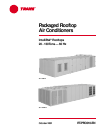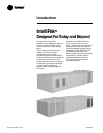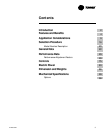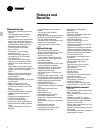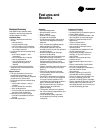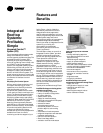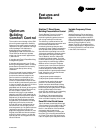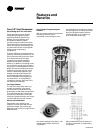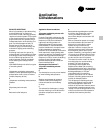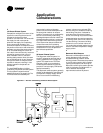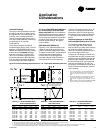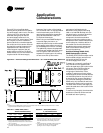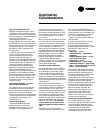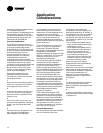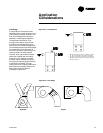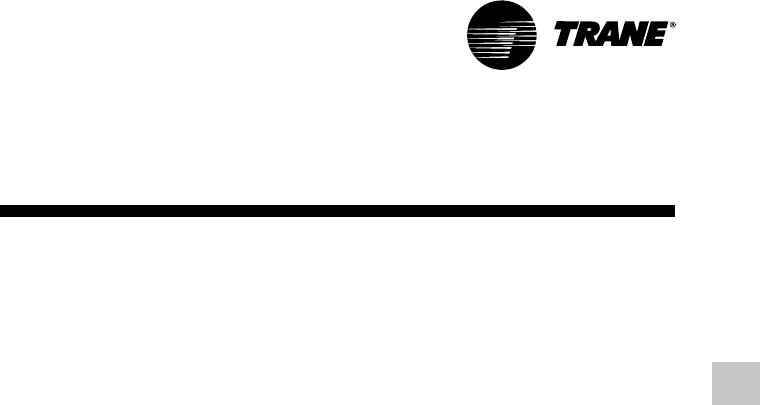
9RT-PRC010-EN
Application
Considerations
EXHAUST AIR OPTIONS
When is it necessary to provide building
exhaust? Whenever an outdoor air
economizer is used, a building generally
requires an exhaust system. The purpose
of the exhaust system is to exhaust the
proper amount of air to prevent over or
underpressurization of the building. The
goal is to exhaust approximately 10
percent less air than the amount of
outside air going into the building. This
maintains a slightly positive building
pressure.
A building may have all or part of its
exhaust system in the rooftop unit. Often,
a building provides exhaust external to
the air conditioning equipment. This
external exhaust must be considered
when selecting the rooftop exhaust
system.
IntelliPak® Rooftop units offer four types
of exhaust systems:
1
100 percent modulating exhaust with
Statitrac™ direct space sensing building
pressurization control (with or without
variable frequency drives).
2
100 percent modulating exhaust without
Statitrac.
3
50 percent power exhaust.
4
Barometric relief dampers.
Application Recommendations
1
100 percent modulating exhaust with
Statitrac™ control
For both CV and VAV rooftops, the 100
percent modulating exhaust discharge
dampers (or VFD) are modulated in
response to building pressure. A
differential pressure control system,
called Statitrac™, uses a differential
pressure transducer to compare indoor
building pressure to atmospheric
pressure. The FC exhaust fan is turned on
when required to lower building static
pressure to setpoint. The Statitrac control
system then modulates the discharge
dampers (or VFD) to control the building
pressure to within the adjustable,
specified dead band that is set at the
Human Interface Panel.
Advantages of the Statitrac™
100 percent modulating exhaust
system are:
a
The exhaust fan runs only when needed
to lower building static pressure.
b
Statitrac compensates for pressure
variations within the building from
remote exhaust fans and makeup
air units.
c
The exhaust fan discharges in a single
direction resulting in more efficient fan
operation compared to return fan
systems.
d
Because discharge dampers modulate
the airflow, the exhaust fan may be
running unloaded whenever the
economizer dampers are less than 100
percent open.
With an exhaust fan system, the supply
fan must be sized to pull the return air
back to the unit through the return
system during non-economizer
operation. However, a supply fan can
typically overcome return duct losses
more efficiently than a return air fan
system. Essentially, one large fan by itself
is normally more efficient than two fans
in series because of only one drive loss
not two as with return air systems.
The reason for either a return air fan or
an exhaust fan is to control building
pressure. The Trane 100 percent
modulating exhaust system with
Statitrac does a better job controlling
building pressure than return fans simply
because 100 percent modulating exhaust
discharge dampers (or VFD) are
controlled directly from building
pressure, rather than from an indirect
indicator of building pressure such as
outdoor air damper position.
The 100 percent modulating exhaust
system with Statitrac may be used on
any rooftop application that has an
outdoor air economizer. However, when
most exhaust is handled external to the
rooftop or when building pressure is not
critical, one of the other less expensive
methods of exhaust may be used.



